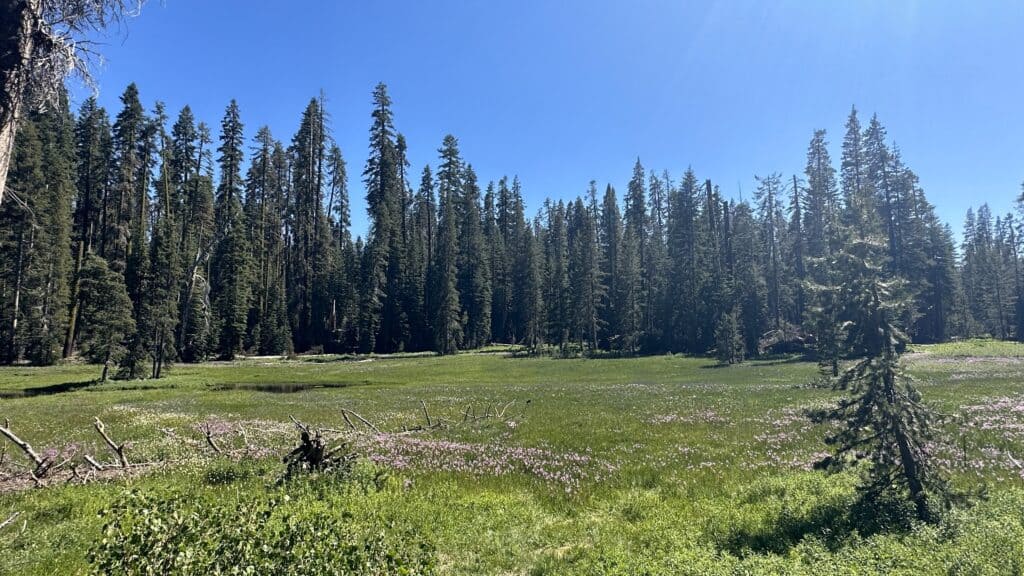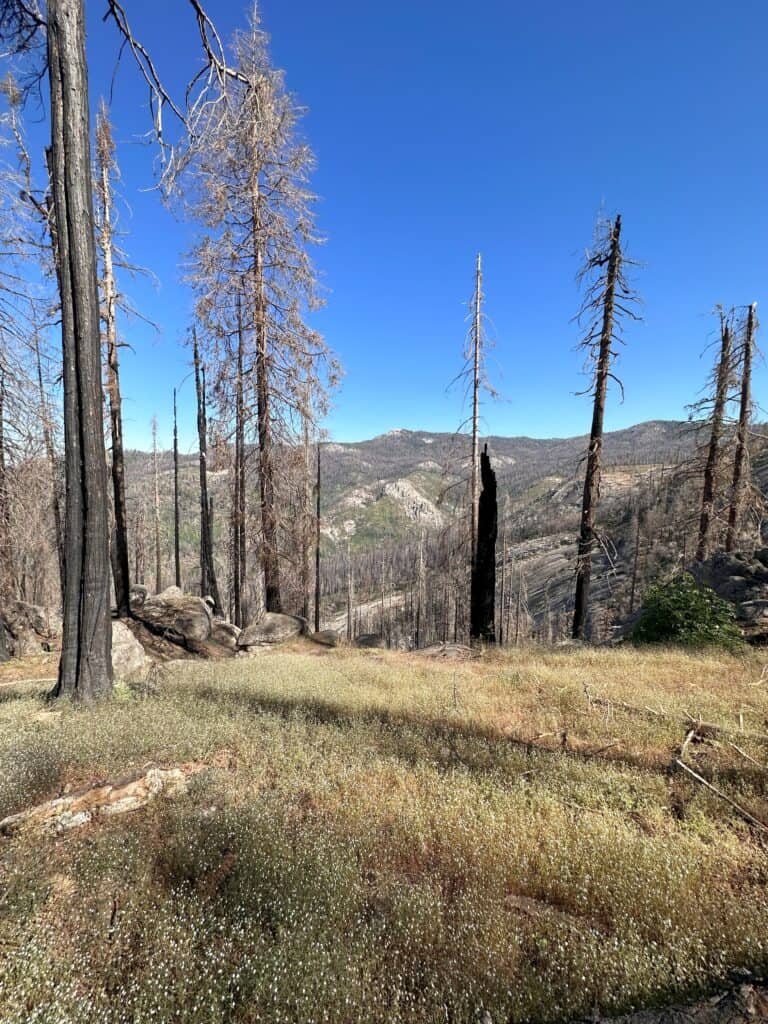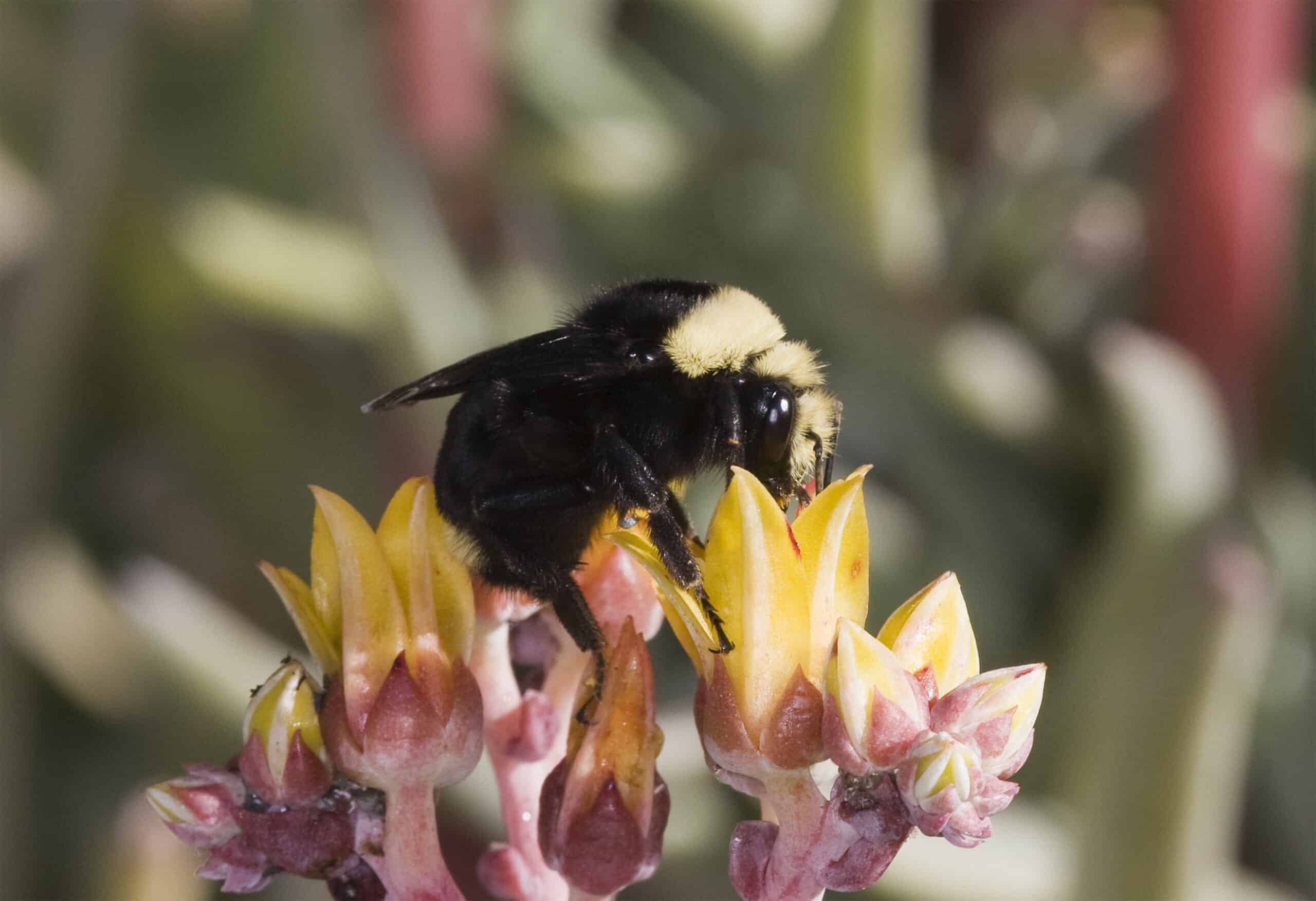Share this article
Wildlife Featured in this article
- Yellow-faced bumble bee
Wildfires make bumble bees bigger, more abundant
Bumble bees benefit from wildfire in the Sierra Nevada Mountains
For two years after a wildfire, bumble bees are both bigger and more abundant in the Southern Sierra Nevada Mountains.
“Body size is really important in bumble bees,” said Claudinéia Costa, a project scientist at the University of California, Riverside. “So, we wanted to understand what factors affect this.”
Costa already knew two things to be true—what yellow-faced bumble bees (Bombus vosnesenskii) eat affects their body size, and fire reshapes the number and types of plants on a landscape. “We know that fires are important for environments that the bees are using,” Costa said.
Body size is important to bumble bees. Jobs within the colony are divided up based on size: smaller bees spend more time in the nest, while larger bees spend more time flying and foraging.

So, when fires hit some of the meadows and forests in the southern Sierra Nevada Mountains in 2021, where Costa and her team had been monitoring bee populations, she jumped at the opportunity to analyze fire’s effects on bees. She published her findings in a study in Ecology and Evolution.
Surveys revealed that the bees were benefiting from the fire. Bees were bigger on average and more abundant. “In general, fires change the environment in a way that makes bees more abundant,” Costa said.
Bees are one of the first species to recolonize these areas after a fire. They feed on nectar and pollinate plants, which helps create more plants—a positive feedback loop that ultimately creates more foraging opportunities for bees.

But this benefit wasn’t necessarily because of a significant difference in the quality of floral resources in burned areas compared to areas that hadn’t burned in the past 10 years. While the fires created unique floral assemblages, researchers found that the overall amount of resources the flowers offered—including nectar and pollen—didn’t increase during the study period.

Costa thinks this might be because the areas where she conducts her fieldwork are already high-quality habitats, so the relative change in quality was low, despite the burn.
Since the amount and quality of pollen and nectar didn’t change, Costa thinks some of the increases in body size of worker bees and overall bumble bee abundance could be due to finer-scale changes in resources that her study didn’t detect, including changes in soil chemistry post-fire.
There’s also nesting habitat. Costa thinks the increase in bee abundance might be due to habitat creation for these ground-nesting bees. “Because the fire cleans up the underbrush, it creates more nesting opportunities for the bees,” she said.

As climate change increases the intensity and frequency of wildfires, Costa said it’s important to understand their effects on bumble bees, which are both ecologically and economically important species. In North America, bumble bees are one of the most important pollinators, helping several crops reproduce.
By understanding how fire impacts important species like pollinators, Costa said we can better understand how to manage these landscapes as the environment continues to change.
Header Image: Yellow-faced bumble bees pollinate many crops, including tomatoes, strawberries and blueberries. Credit: Kevin Cole








